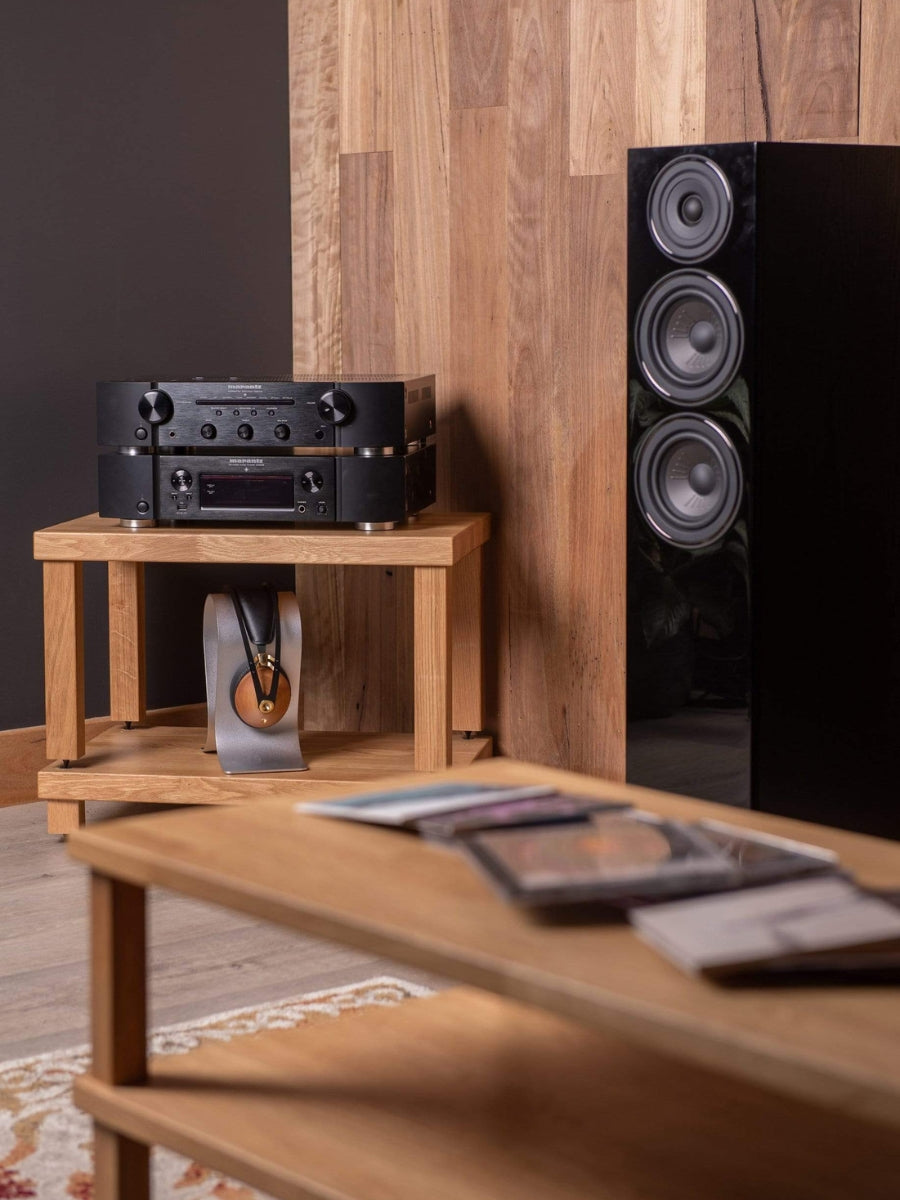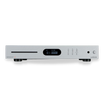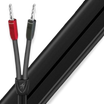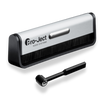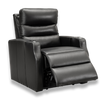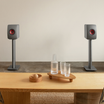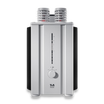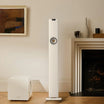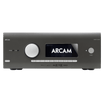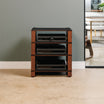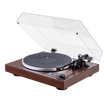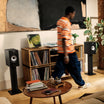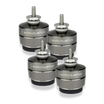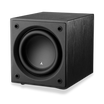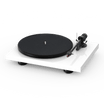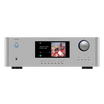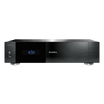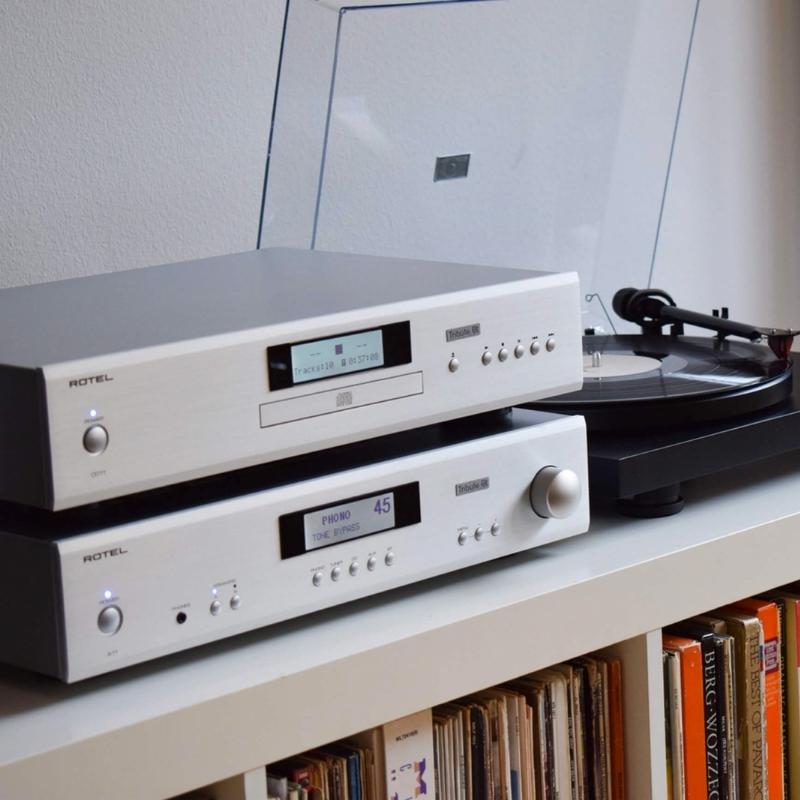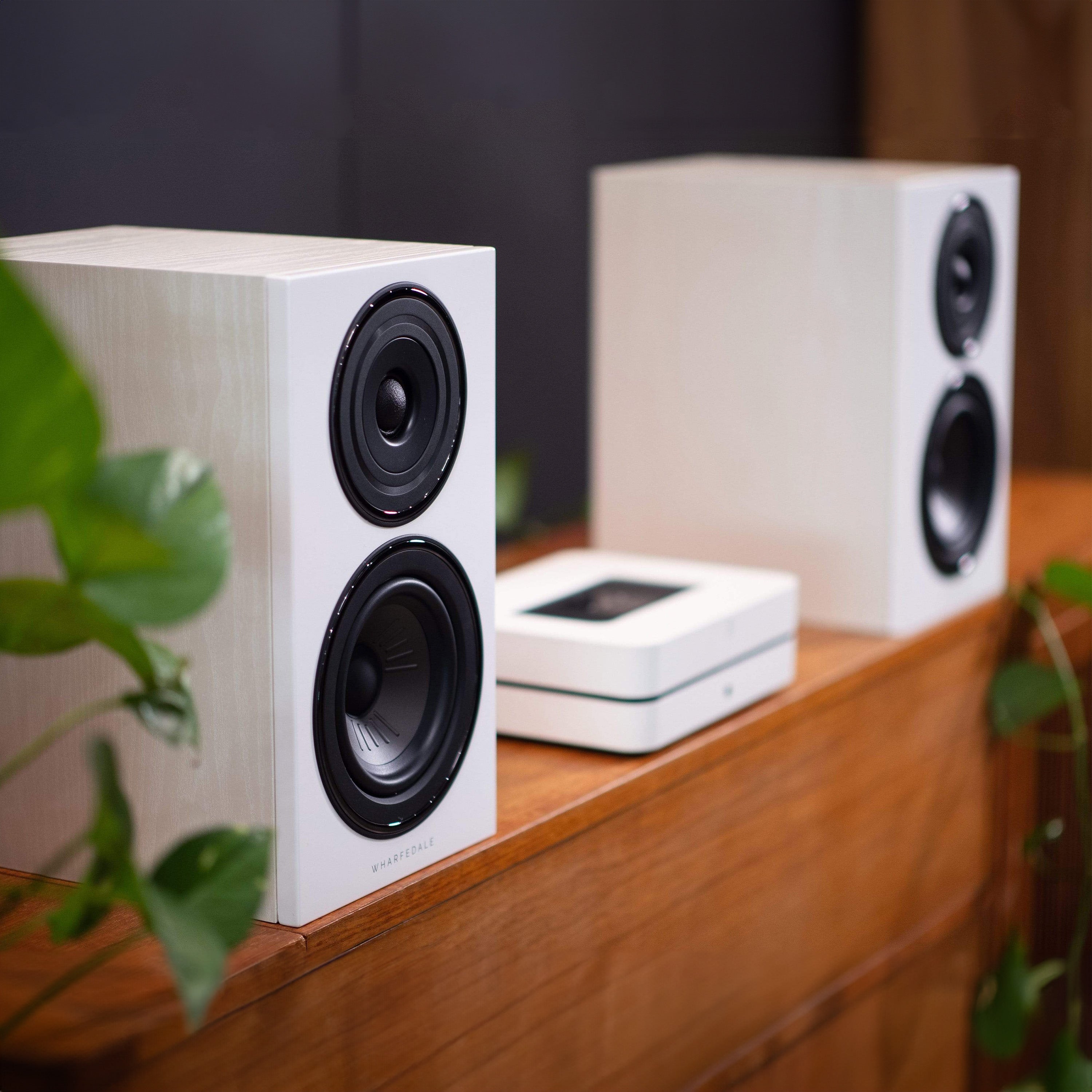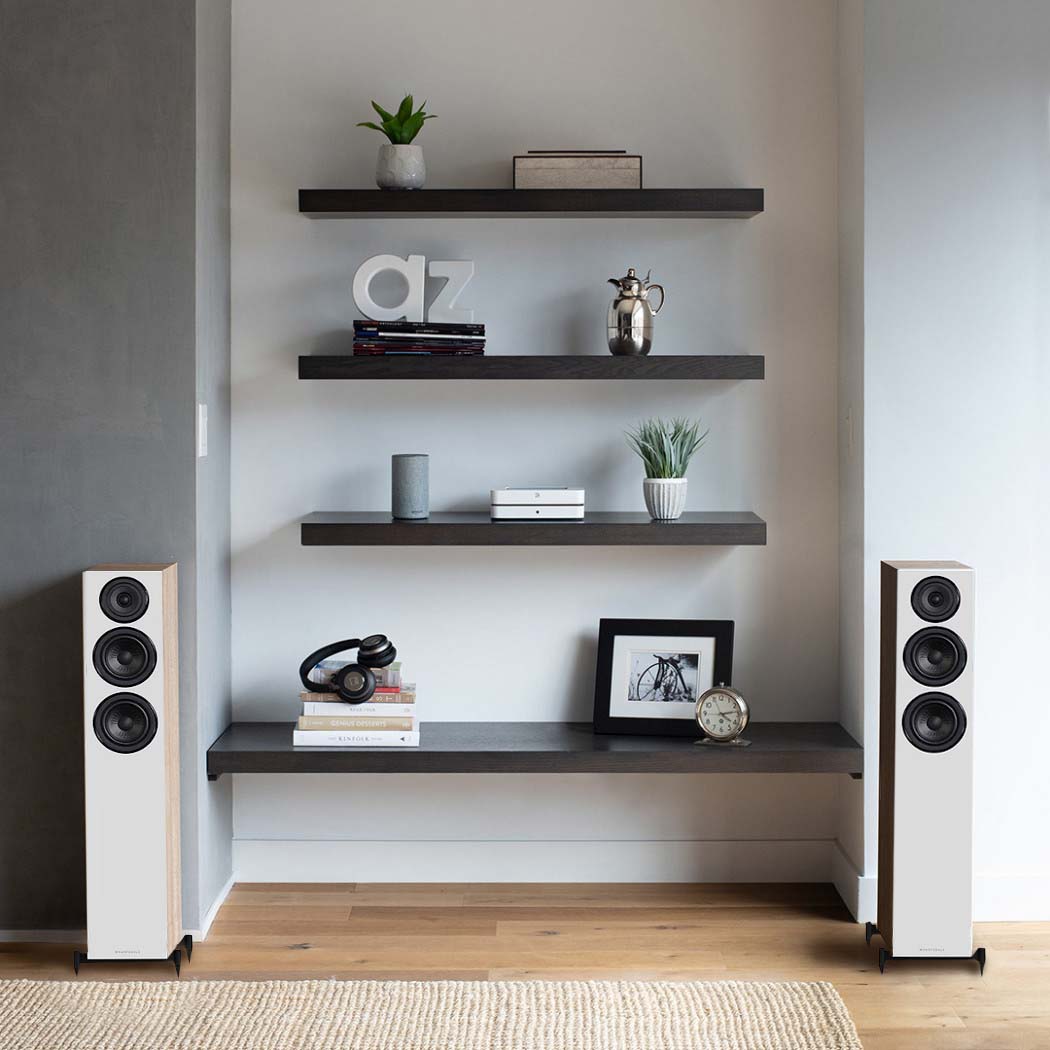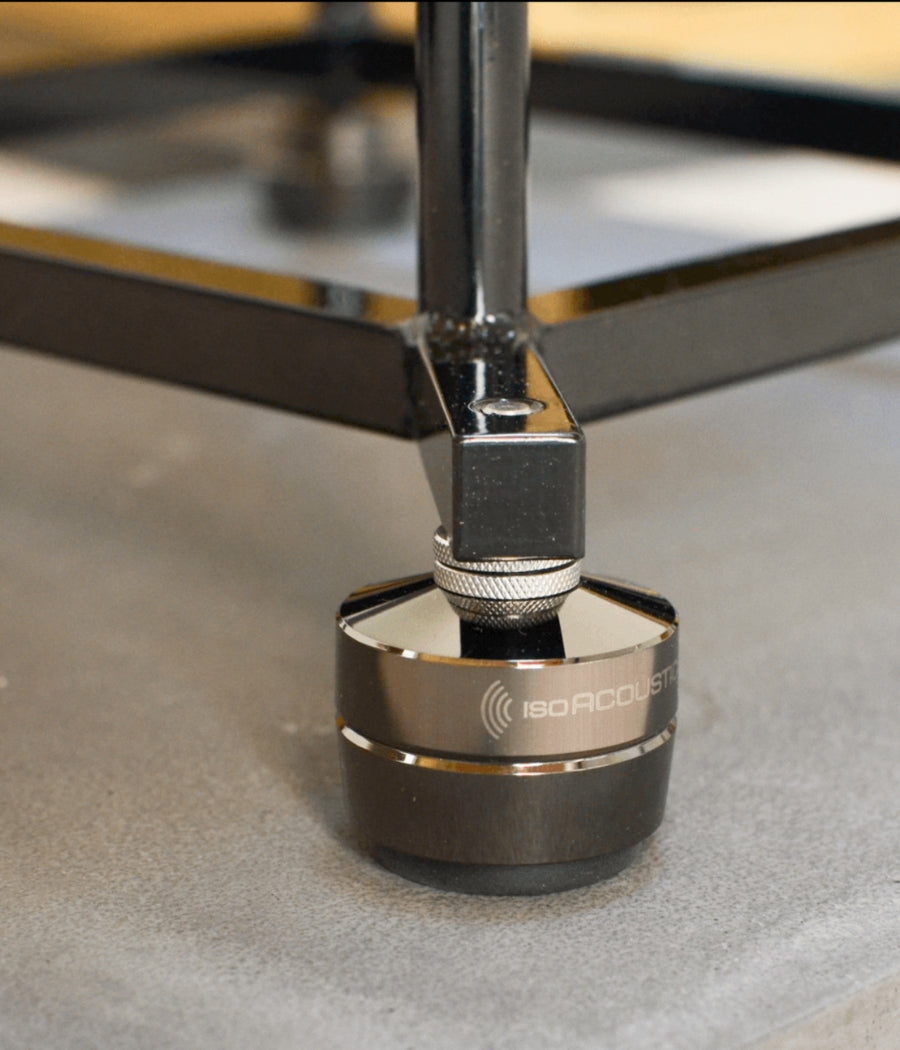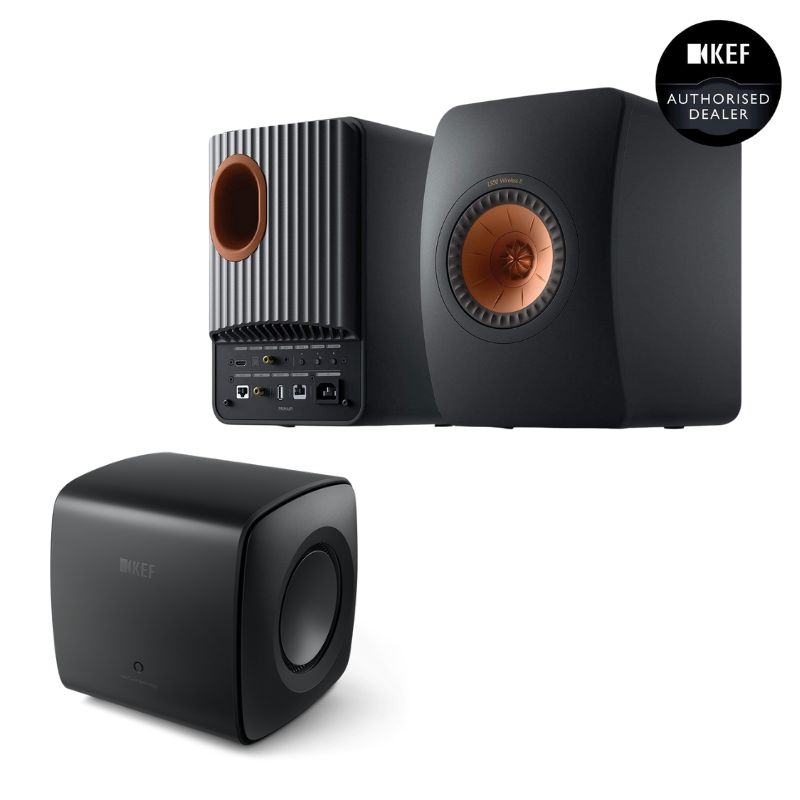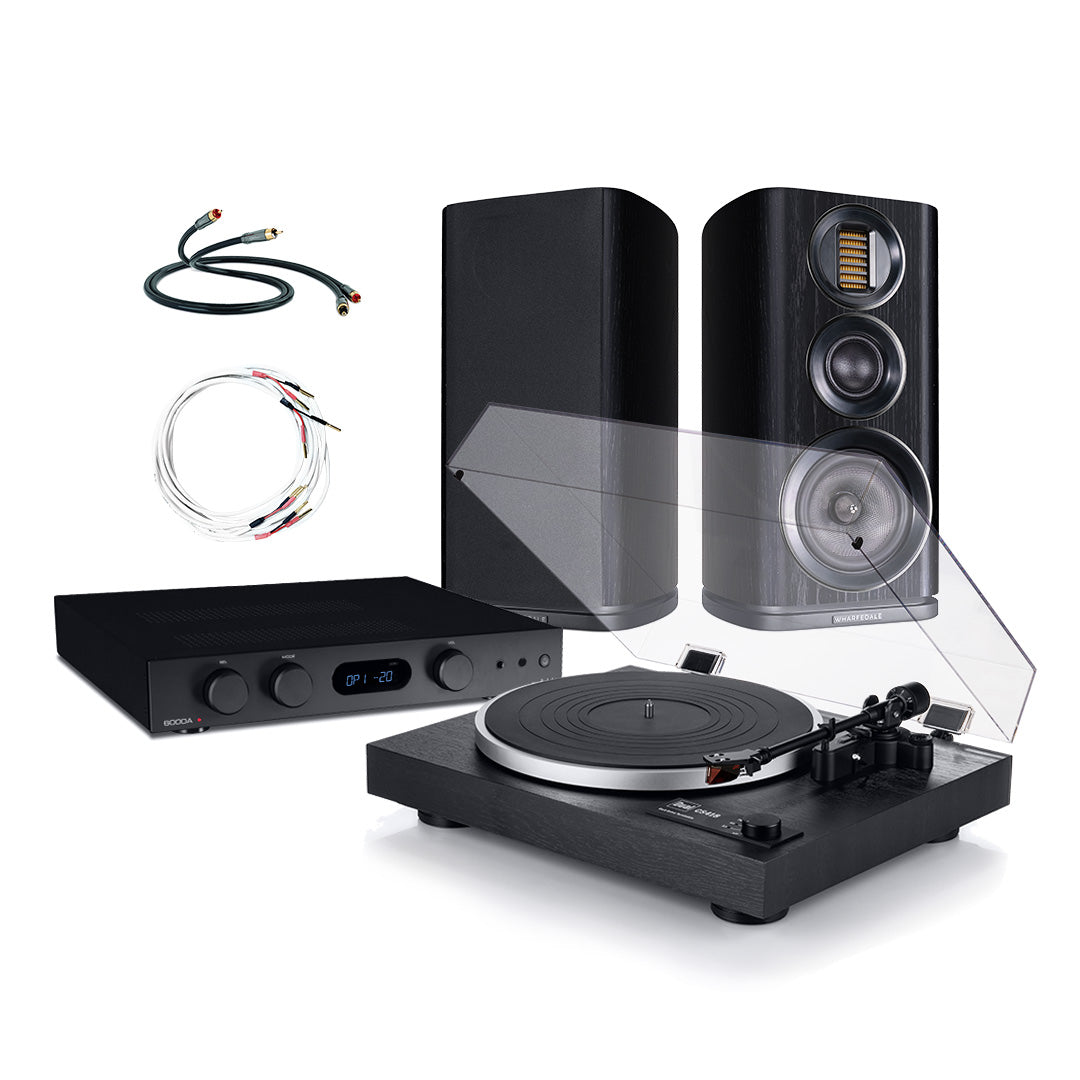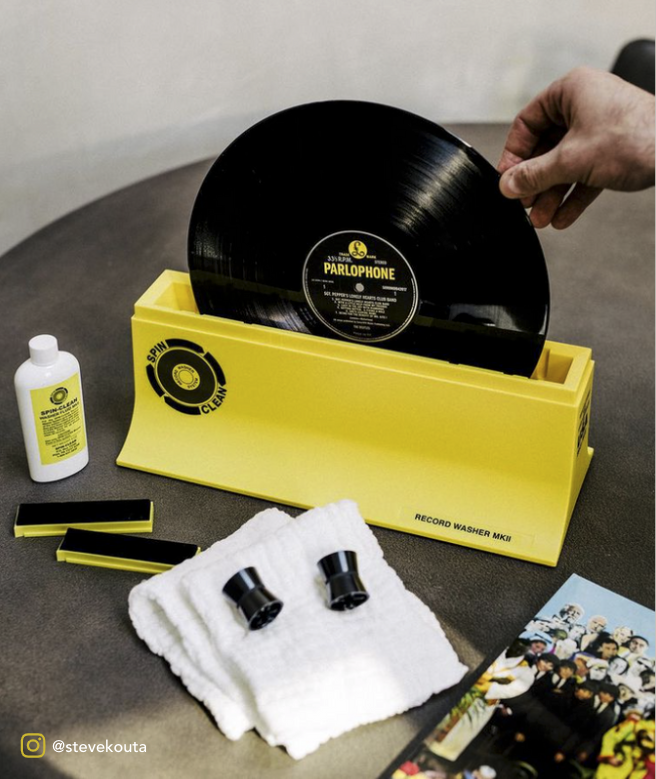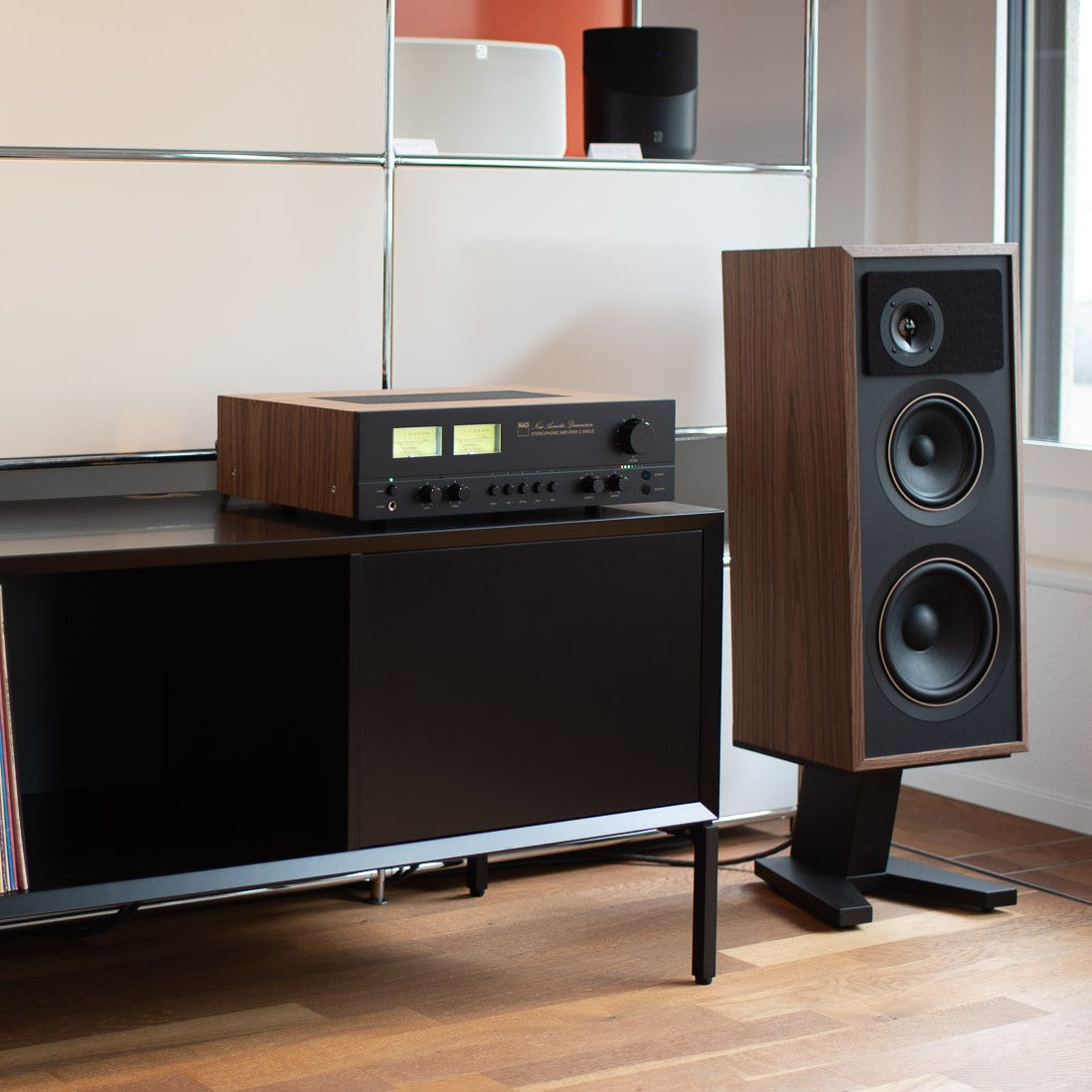

NARROW YOUR SEARCH FOR
Hi-Fi Packs & Stereo Systems
Filters
32 products
TELL ME MORE ABOUT
Hi-Fi Packs & Stereo Systems
At its core, a hi-fi system, which stands for "high fidelity system," is designed to reproduce audio with the highest possible quality, replicating sound as close as possible to the... Read More
At its core, a hi-fi system, which stands for "high fidelity system," is designed to reproduce audio with the highest possible quality, replicating sound as close as possible to the original source. It aims to minimize distortion, noise, and other imperfections that can intrude upon the pure listening experience.
What is a hi-fi system?
Systems can differ in their setup and design, however, there are several components that generally make up the basis of a high-quality hi-fi system:
1.) Source:
This can be a turntable, CD player, digital streamer, or any other device that plays back recorded music. With advancements in technology, even high-resolution digital sources like streaming platforms are becoming increasingly common in hi-fi setups.
2.) Amplifier:
At the heart of any system, an amplifier takes the low-level signal from your source and boosts it to drive the speakers. There are integrated amplifiers that combine pre-amp (source selection, volume control) and power amp stages, and there are separate components for those who want further refinement.
3.) Speakers:
These receive the electrical signal from the amplifier and turn it into sound waves - i.e. music! Speaker design, materials, and configuration play a pivotal role in the overall sound profile of the system.
4.) Cables and Interconnects:
These carry signals between components. Quality cables are essential in a hi-fi system to ensure minimal signal loss or interference.
5.) Additional components:
These can include DACs (Digital to Analog Converters), headphone amplifiers, and other devices designed to further enhance the listening experience.
A quick thought before we move on:
One of the most compelling aspects of a hi-fi system is its modularity. Enthusiasts can start with a basic setup and then gradually upgrade individual components to suit their preferences and budget. The journey of building and refining one's system is part of the allure, as each change can bring about a richer and more immersive audio experience.
For newcomers, it may be tempting to start with a 'one box' or all-in-one sound system, however, you'll quickly find that when compared to genuine Hi-Fi systems, these are very limiting and often sub-standard in terms of sound quality, component quality and your general audio experience.
It's important to understand that "hi-fi" doesn't always mean "expensive" and while there are certainly high-end components that command premium prices, there are also many affordable options that deliver impressive performance.
How to set up a hi-fi system?
Whether it's your first sound system, or the upgrade of your dreams - setting up a hi-fi system is a rewarding experience.
While the process may seem daunting to newcomers, with the right guidance and understanding of each component's role, it can be straightforward.
Here's a step-by-step guide to help you set up your system for optimal audio performance:
1.) Choose a Suitable Location:
Start by selecting a room or area in your home that's free from excess ambient noise. Ensure the space is big enough for your equipment and offers room for sound waves to travel without too much interference.
2.) Position the Components:
- Source Devices: Place turntables, CD players, and streamers on a sturdy surface, away from direct sunlight or heating sources. Consider using isolation platforms or feet to reduce vibrations.
- Amplifier: Ensure it has ample ventilation to avoid overheating. Keeping it on a separate shelf or stand can also reduce interference.
- Speakers: Depending on their size, they can be placed on stands, shelves, or directly on the floor. Ensure they are at ear level when seated. For optimal stereo imaging, angle them slightly towards the listening position and maintain an equal distance from each speaker to the listener.
3.) Connect Everything:
Using high-quality cables and interconnects.
- Power: Connect all components to a power strip or conditioner to ensure they receive clean power and protection from surges.
- Audio: Connect your source device(s) to the amplifier using appropriate cables (RCA, XLR, etc.). Then, connect the amplifier to the speakers using speaker cables, ensuring the positive and negative terminals match.
4.) Optimize the Room Acoustics:
The room itself plays a significant role in sound quality. Soft materials like rugs, curtains, and bookshelves can help absorb excess sound reflections. If you're serious about acoustics, consider adding bass traps, diffusers, and acoustic panels.
5.) Tweak and Tune:
Once everything's connected, play some familiar music and adjust the settings. This includes balancing the treble and bass, setting the right volume, and experimenting with speaker positioning.
6.) Maintenance:
Clean your equipment regularly, especially vinyl records and turntable needles. Ensure that your cables are in good condition and replace them if necessary.
We understand that setting up a hi-fi system is as much an art as it is a science. As such, our experts are always on hand to guide you through the process, ensuring you get the most out of your audio equipment and create a listening environment that truly resonates.
Whether you're a seasoned audiophile or just starting, we're here to help every step of the way.
How to choose the right hi-fi system for your needs?
Choosing the right hi-fi system is a journey that intertwines personal preferences, room acoustics, and of course, budget. Every listener has unique requirements, so understanding what you want is key.
We always recommend having a chat with one of our in-house Hi-Fi experts to help find your perfect system, but at a glance, this is a quick guide that can help you define what you should be looking for:
- Define Your Purpose: Are you looking for a system primarily for casual listening, immersive movie experiences, or critical music analysis? Your intent will dictate the features and quality you need.
- Establish a Budget: Hi-fi systems can range from reasonably priced to ultra-luxurious. Determine a comfortable budget, keeping in mind that investing in quality components upfront can provide better long-term value.
- Assess Your Room: The size and acoustics of your listening space play a pivotal role. A large room might benefit from floor-standing speakers, while a smaller space could be better suited for bookshelf speakers.
- Prioritize Sources: What's your preferred music source? Vinyl enthusiasts will want a quality turntable, while digital music lovers might prioritize a good DAC or streaming device. Maybe you want a CD player or even a cassette deck. Ensure your system can accommodate your preferred sources.
- Understand the Sound Profile You Love: Some people enjoy a warm, rich sound, while others prefer a bright, detailed profile. Different brands and components offer varying sound characteristics. Listening to different systems can help you identify what resonates with you.
- Expandability: Consider if you might want to upgrade or add components in the future. Ensure the system you choose has the flexibility to evolve with your tastes.
- Reviews and Recommendations: Research reviews, ask for recommendations, and most importantly, if possible, listen to systems in-store. Trust your ears; they're the best judges.
- Aesthetics and Size: While performance is paramount, you might also want your system to fit seamlessly into your home decor. Consider the design, size, and finish of the components.
- Technical Support and Warranty: Good customer service, easy access to repairs, and a comprehensive warranty can be crucial, especially for high-end systems.
- Consider Bundled Packs: High-quality hi-fi packs or stereo system bundles are curated to provide harmonious performance and can offer better value than piecing a system together separately.
Remember, the "right" system is one that brings you joy and meets your personal preferences. If you have any questions, queries or concerns at all - don't hesitate to get in touch so we can help you out!
NEED MORE GUIDANCE?
We are here to help
Check out some of our most commonly asked questions.
What do I need to play records?
Getting into vinyl? That’s awesome! We have some curated turntable Hi-Fi packs, with everything you'll need to get spinning right away. But if you want to build your own, read on for all the details.
First off, you'll need a turntable. It's the star of the show, so make sure it’s in good nick, with a decent cartridge and stylus (needle).
Next, there’s the phono preamp. Some turntables or amplifiers come with one built-in, but if yours doesn’t, you’ll need one as a bridge between your turntable and amplifier or powered speakers.
For the sound output, you’ve got two options. You can go with a traditional setup involving an integrated amplifier to take the signal from your phono preamp and power your passive speakers. Alternatively, you can opt for powered speakers, which have the amplifier built in – a handy all-in-one solution.
Speaking of speakers, good ones are a must for that rich, warm vinyl sound we all love. Whether you go for bookshelf or floorstanding speakers (or powered ones) depends on your space and budget.
And there you go! With these essentials, you’ll be ready to dive into your vinyl collection and enjoy that classic sound.
What can a wireless speaker do?
Wireless speakers are a game-changer for how you enjoy music and audio around the house. First off, they let you stream music wirelessly from your phone, tablet, or computer, so no more messing about with cables. You can easily play tunes from Spotify, Apple Music, Tidal or whatever streaming service you fancy.
If you’re into having music everywhere, many wireless speakers offer multi-room audio. You can sync them up to play the same music in every room or control what plays in each room individually, perfect for parties or just keeping the vibes consistent throughout your home.
Voice control is another brilliant feature. Many come with built-in assistants like Alexa, Google Assistant, or Siri. You can control your music with just your voice, ask for the weather, set reminders, or even control other smart home devices.
Sound quality? These little gadgets often pack a punch, delivering high-quality audio that can rival traditional wired setups. Some even offer 360-degree sound, filling the room with music from every angle.
In a nutshell, wireless speakers bring flexibility, convenience, and top-notch sound to your audio experience, making them a fantastic addition to any home. Whether you’re hosting a party, working from home, or just chilling out, they make listening to music a breeze.
How do you choose the right speaker & amplifier combination?
Deciding on a good speaker and amplifier combination is like putting together a perfect wine and cheese pairing—it’s all about balance and harmony. Here’s a conversational guide to help you through it:
First, consider your speakers. These are your main players, so you want to choose ones that fit your space and listening preferences. If you love deep bass and have a bit of room, floorstanding speakers might be your go-to. For smaller spaces or a more subtle look, bookshelf speakers are fantastic.
Now, onto the amplifier. This is where things get interesting. Your amp needs to match your speakers in terms of power and impedance. Check the wattage ratings on your speakers—your amplifier should provide enough power to drive them properly. Too little power and you’ll be missing out on sound quality; too much, and you risk damaging your speakers.
Next, think about the impedance (measured in ohms). Your amp and speakers should be compatible here too. Most speakers are rated at 8 ohms, but some can be 4 or 6. Make sure your amplifier can handle the impedance of your speakers to avoid any performance issues.
Another important factor is the type of sound you’re after. Some amps are known for their warm, rich tones, while others might be more neutral or even slightly bright. It’s a bit like choosing between a vinyl record and a digital stream or CD —each has its own charm. If possible, listen to different amp and speaker combinations to see what sounds best to your ears.
If purchasing online, note that at LE, we have made recommendations on speaker & amplifier combinations that we think sound wonderful together within each product listing.
Don’t forget about connectivity and features. Modern amplifiers often come with a host of options like Bluetooth, Wi-Fi streaming, and various inputs for all your devices. Make sure your amp has the inputs you need for your turntable, CD player, or streaming device.
Finally, consider your budget. Great sound doesn’t always mean breaking the bank, but be prepared to invest to get a quality setup that will last.
In the end, trust your ears. Listen to a few combinations if you can, and go with what makes your music sound the best to you.
Why do I need a headphone amplifier?
If you’re diving into the world of high-quality audio, a headphone amplifier can be a real game-changer. Think of it like this: most standard devices, like your smartphone or laptop, just don’t have the oomph needed to drive headphones properly. They might get the job done, but they won’t do your music justice. A headphone amp gives your headphones the power they need, ensuring you get the volume and clarity that really makes your music shine.
It’s not just about making things louder, either. A good headphone amp can significantly improve sound quality. You’ll get clearer highs, richer mids, and tighter bass, making your favourite tracks sound even better. You might notice details you’ve never heard before, especially if you’re listening to high-resolution audio files.
Premium headphones often have higher impedance, meaning they require more power than your typical audio source can provide. A headphone amp can handle this with ease, making sure your headphones perform at their absolute best. Plus, many amps come with extra features like bass boost, equalisation, and gain control, giving you more ways to tweak the sound to your liking.
In short, if you’re passionate about your music and want to hear it in the best possible way, a headphone amplifier is definitely worth considering. It’s all about unlocking the full potential of your gear and really getting the most out of your listening experience.
Where should I start when designing a home cinema?
Designing your own home cinema? That's awesome! We are here to help walk you through the process, but as a starting point, here’s what we would recommend and where to kick things off:
First up, pick your spot. For most people this is your existing lounge room, but if you have an underused garage, or spare bedroom, then you have an opportunity to create your very own true Home Cinema experience. Find a room that’s just right—not too cramped and ideally away from noisy areas. This sets the stage for that immersive movie experience.
Next, think about how you’ll set things up. Plan where your seats will go and where to place your projector screen for the best view from every angle. It’s all about creating that comfy, cinematic vibe.
Sound matters, too. Consider if you want a wireless system for simplicity or a full surround sound speaker system with AV receiver for that surround-sound thrill. Think about soundproofing or adding acoustic panels or thick carpets to really amp up the audio quality of the room.
Now, onto the screen. Decide between a crisp TV or a projector setup, depending on your room size and personal style. Maybe even throw in some dimmable lights or smart lighting to set the mood just right.
And hey, don’t forget comfort. Invest in plush cinema seating and think about the décor—whether it’s movie posters, blackout curtains, or popcorn machine & bar area, whatever gives you that true cinema feel.
Lastly, tech it up! Make sure everything—from your Blu-Ray player & Apple TV to your gaming consoles—is set to sync perfectly with your new setup.
With these steps, you’re on your way to creating a home cinema that’s not just a space, but an experience. Enjoy movie nights like never before!


